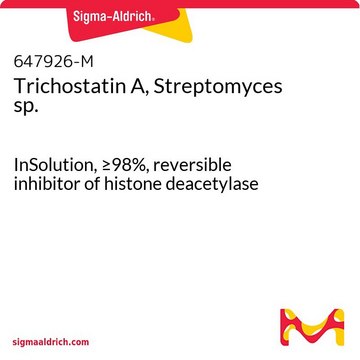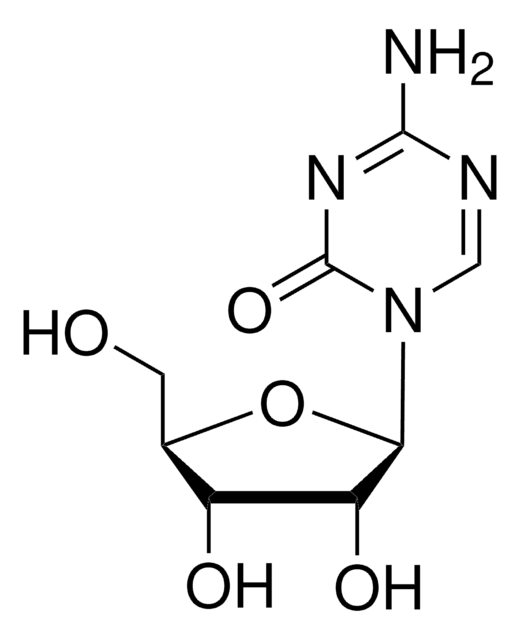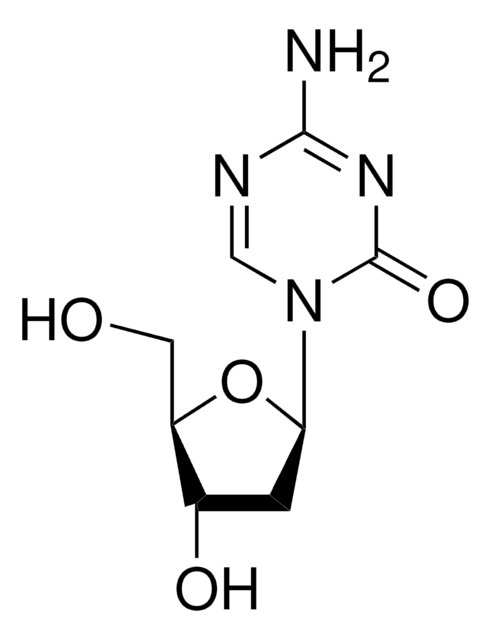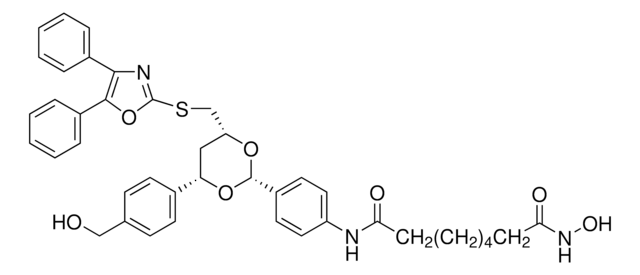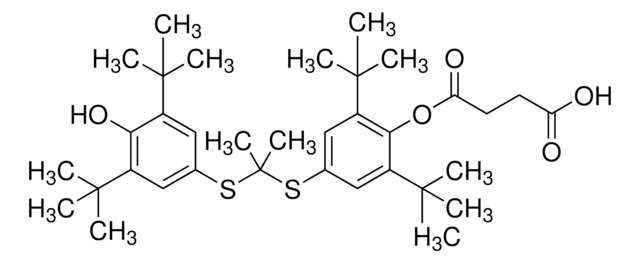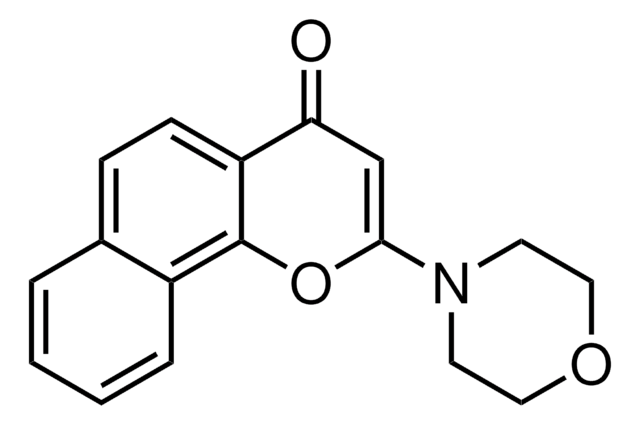T8552
Trichostatin A
≥98% (HPLC), from Streptomyces sp.
Sinônimo(s):
TSA, [R-(E,E)]-7-[4-(Dimethylamino)phenyl]-N-hydroxy-4,6-dimethyl-7-oxo-2,4-heptadienamide
About This Item
Produtos recomendados
fonte biológica
Streptomyces sp.
Nível de qualidade
Ensaio
≥98% (HPLC)
Formulário
powder
solubilidade
methanol: soluble 1.90-2.10 mg/mL, clear, colorless to faint yellow or tan
DMF: soluble
DMSO: soluble
H2O: insoluble
acetone: slightly soluble
acetonitrile: soluble
benzene: slightly soluble
chloroform: slightly soluble
ethanol: soluble
ethyl acetate: slightly soluble
lower alcohols: soluble
temperatura de armazenamento
−20°C
cadeia de caracteres SMILES
C[C@H](\C=C(C)\C=C\C(=O)NO)C(=O)c1ccc(cc1)N(C)C
InChI
1S/C17H22N2O3/c1-12(5-10-16(20)18-22)11-13(2)17(21)14-6-8-15(9-7-14)19(3)4/h5-11,13,22H,1-4H3,(H,18,20)/b10-5+,12-11+/t13-/m1/s1
chave InChI
RTKIYFITIVXBLE-QEQCGCAPSA-N
Informações sobre genes
human ... HDAC1(3065) , HDAC4(9759) , HDAC6(10013) , HDAC8(55869)
mouse ... ENSMUSG00000061062(15181)
rat ... Hdac7a(84582)
Procurando produtos similares? Visita Guia de comparação de produtos
Descrição geral
Aplicação
Ações bioquímicas/fisiológicas
Características e benefícios
Nota de preparo
produto relacionado
Código de classe de armazenamento
11 - Combustible Solids
Classe de risco de água (WGK)
WGK 3
Equipamento de proteção individual
dust mask type N95 (US), Eyeshields, Faceshields, Gloves
Escolha uma das versões mais recentes:
Já possui este produto?
Encontre a documentação dos produtos que você adquiriu recentemente na biblioteca de documentos.
Os clientes também visualizaram
Artigos
Epigenetic modifications are thought to occur through two key interconnected processes—DNA methylation and the covalent modification of histones.
Conteúdo relacionado
Apoptosis, or programmed cell death (PCD), is a selective process for the removal of unnecessary, infected or transformed cells in various biological systems. As it plays a role in the homeostasis of multicellular organisms, apoptosis is tightly regulated through two principal pathways by a number of regulatory and effector molecules.
We offer a variety of small molecule research tools, such as transcription factor modulators, inhibitors of chromatin modifying enzymes, and agonists/antagonists for target identification and validation in gene regulation research; a selection of these research tools is shown below.
Nossa equipe de cientistas tem experiência em todas as áreas de pesquisa, incluindo Life Sciences, ciência de materiais, síntese química, cromatografia, química analítica e muitas outras.
Entre em contato com a assistência técnica

